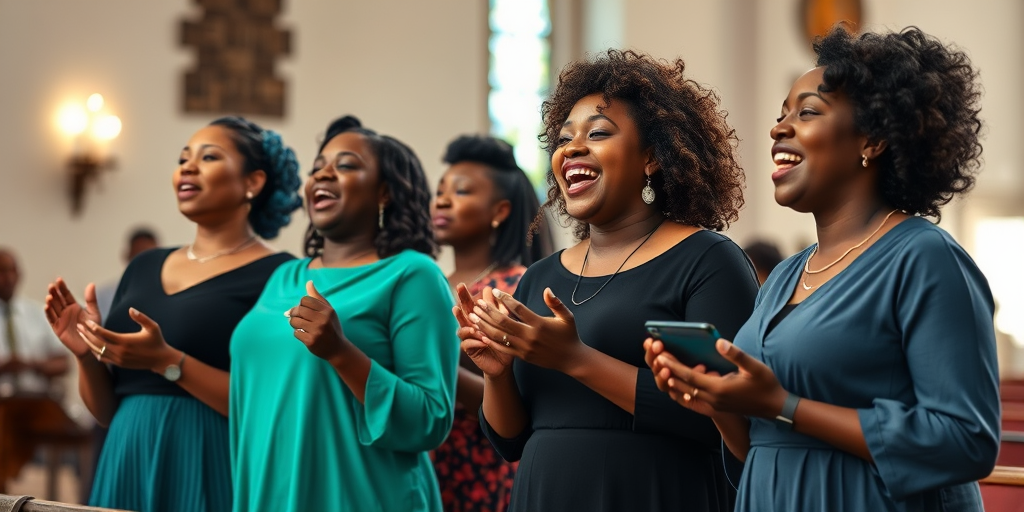Have you ever wondered why women’s voices in gospel quartet music remain both revolutionary and underappreciated? Despite scarce historical documentation, their pioneering contributions have shaped a vibrant musical tradition and redefined performance dynamics. In this post, we explore early recordings and community gatherings that laid the foundation for women’s growing influence. As cultural shifts continue to empower these trailblazers, we uncover a compelling narrative of resilience, creativity, and legacy that challenges long-held assumptions in gospel music history.
Influential Figures and Pioneering Female Quartet Leaders in Gospel Quartet Music: A Growing Influence
Pioneering female voices have been at the forefront of uplifting gospel messages throughout the history of quartet music. Their leadership and passion have broken barriers and redefined performance standards within the genre. We recognize that figures like the Speer Ladies and other trailblazing groups have set high benchmarks, inspiring both their peers and future generations. Their contributions resonate deeply within our community as they demonstrate the powerful impact of female leadership. The stories of these influential pioneer figures are not only inspirational narratives but also serve as key milestones in the evolution of gospel quartet performance. Their resilience, dedication, and innovative approaches continue to cultivate a rich tradition of spiritual and musical expression.
- Influential pioneer A
- Influential pioneer B
- Influential pioneer C
- Influential pioneer D
- Influential pioneer E
In addition to their symbolic importance, these pioneering women offer tangible examples of breakthrough performances that have altered the landscape of gospel quartet music. Many of these leaders emerged during times of limited visibility for female artists, yet they managed to capture audiences with dynamic vocal deliveries and heartfelt interpretations of sacred texts. Anecdotal evidence from community gatherings and early recordings affirms that their presence elevated the overall quality and emotional depth of performances. By embracing both tradition and innovation, these leaders have paved the way for a new generation of gospel artists who continue to interweave faith, community, and artistic excellence. Their biographical snapshots remind us that dedication to style and substance has the power to transform not only music but also the spiritual lives of many.
Modern Trends and Emerging Voices in The Role of Women in Gospel Quartet Music: A Growing Influence

Modern trends in gospel quartet music are being redefined by digital innovations and a renewed focus on creative expression. New media has amplified female voices, allowing them to reintroduce traditional harmonies with modern twists and to engage audiences on social platforms.
- Digital engagement through social platforms
- Innovative musical arrangements
- Revival of quartet traditions with new voices
- Cross-generational influences on performance
- Increased community interaction
These developments expand the reach of gospel music while empowering female artists to explore innovative arrangements and collaborate across various generations. The fusion of contemporary techniques with classic quartet styles not only revitalizes established traditions but also drives a dynamic cultural conversation. Female performers are leveraging these trends to create fresh interpretations of gospel music, enhancing both its spiritual and artistic dimensions in community settings worldwide.
| Trend | Description | Example |
|---|---|---|
| Digital Engagement | Utilizing social media platforms for promotion and audience connection | Active presence on Facebook and Instagram |
| Innovative Arrangements | Incorporating modern musical elements with traditional quartet harmonies | Recent album releases with updated soundscapes |
| Revival of Traditions | Integrating classic quartet styles with fresh, new vocal expressions | Reimagined live performances that honor legacy while embracing change |
Final Words
In the action, we have explored how early contributions, pioneering leadership, and cultural shifts have shaped gospel quartet music. We examined the evolution of digital trends and the empowerment of female voices that continue to inspire communities.
Reflecting on The Role of Women in Gospel Quartet Music: A Growing Influence, we see a vibrant legacy and exciting future. Our journey reaffirms the blend of tradition and innovation that uplifts our shared musical spirit.
FAQ
Q: What historical role did women play in gospel quartet music?
A: Women have been integral to gospel quartet music since its inception, initially serving as accompanists and background vocalists before emerging as lead performers and group leaders in the early 20th century.
Q: Who is considered the mother of gospel music?
A: Sallie Martin is widely recognized as the “Mother of Gospel Music.” She helped establish the National Convention of Gospel Choirs and Choruses and mentored numerous gospel artists.
Q: How have women influenced modern gospel quartet music?
A: Women have revolutionized gospel quartet music through innovative arrangements, digital engagement, and leadership roles. They’ve introduced contemporary elements while preserving traditional quartet harmonies.
Q: What impact did female quartets have on gospel music culture?
A: Female quartets transformed gospel music culture by breaking gender barriers, introducing new vocal arrangements, and expanding performance opportunities for women in religious music.
Q: How are women shaping contemporary gospel quartet music?
A: Today’s female gospel artists are pioneering new musical styles, leveraging social media platforms, and creating cross-generational connections while maintaining the genre’s spiritual foundations.
Q: What role do women play in preserving gospel quartet traditions?
A: Women actively preserve gospel quartet traditions through mentorship programs, community outreach, and educational initiatives while introducing innovative performance techniques to engage new audiences.
